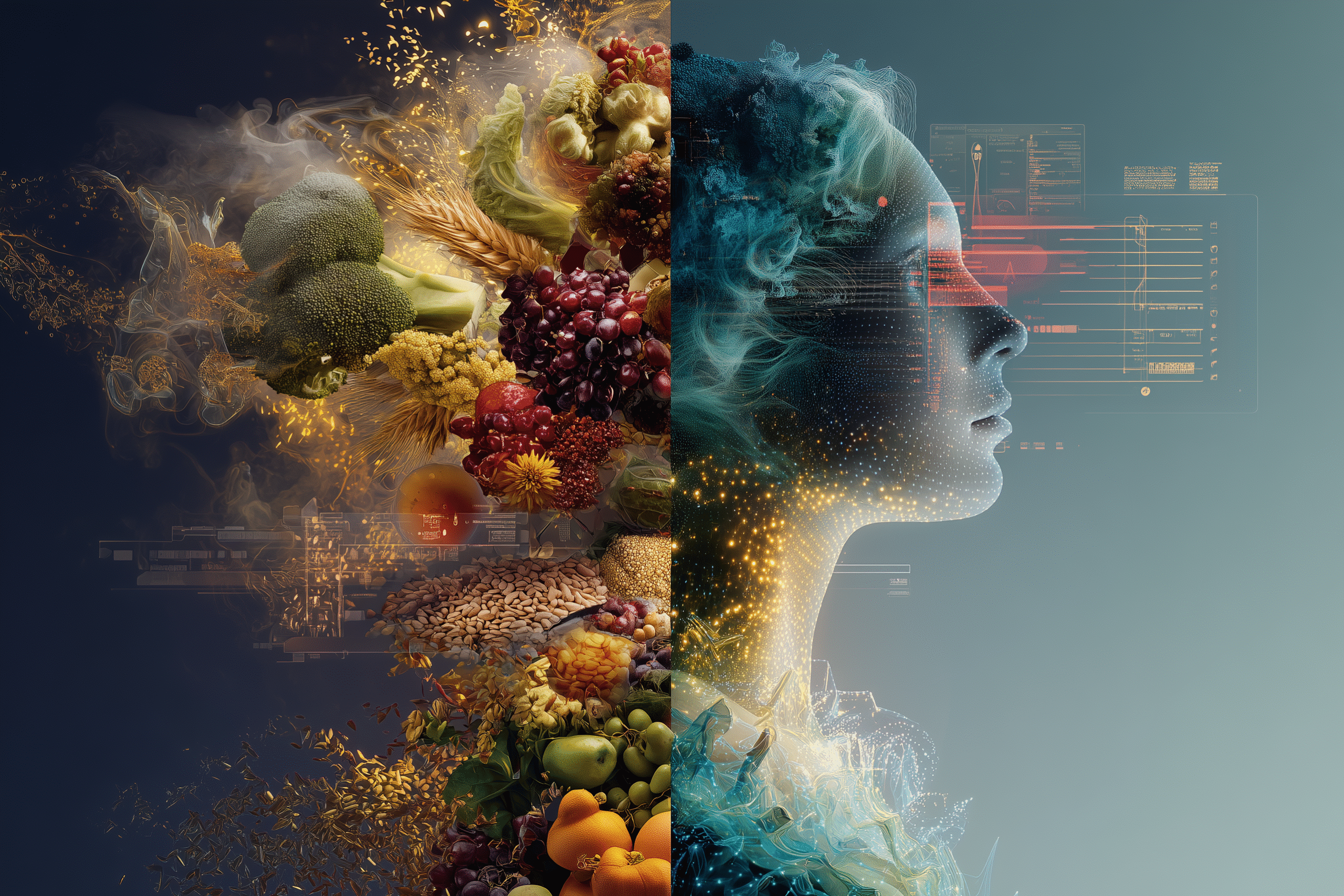People don’t lose their voice to AI. They lose it in their rush to create.
In a rush to generate, publish, and “pump out content,” many creators skip the most important step in any act of creation: alignment. The kind that only presence, not pressure, can unlock.
You see it all the time.
A prompt goes in. Content comes out. It’s clean. Professional. Grammatically sound. It might even rank well.
And yet… it lands with a thud.
You stare at the words, wondering why they don’t move you. You reread the opening. You scan for something to tweak. But what you’re feeling isn’t editorial, it’s existential.
Most people don’t realize what’s wrong. They just feel a kind of dullness, a sense of separation from their own work, like watching a movie of yourself writing, rather than actually feeling the pen in your hand.
That’s the hidden danger of working too quickly with AI. Not that it gets your ideas wrong, but that it gets them too right, in a way that they now sound like everyone else’s ideas.
And without even noticing, your uniqueness begins to slowly fade away.

The Hidden Cost of Speed
Every day, millions of people use tools like ChatGPT to create content, hoping to save time, boost productivity, or unlock inspiration. But in the process, many end up creating things that sound just like everyone else out there.
That’s because the real risk isn’t AI generating something bad, it’s AI generating something so predictably polished that your uniqueness quietly disappears.
This is the hidden cost of speed: it’s not just about cutting corners, it’s about cutting connection. When you bypass the space to explore, reflect, and align, you don’t just lose quality… you lose identity.
For me, the difference between generic and genuine comes down to this: preparation, exploration, and alignment before I ever write a single word.
Before I create anything, I take the time to reflect on what I want to say, who it’s for, and how it needs to feel. I don’t start with prompts. I start with purpose.
Prompting extracts output. Co-creating amplifies your essence.
I’ve seen this firsthand in exploratory sessions where the goal wasn’t to get a final answer, but to surface a deeper insight. In one case, I used AI to model multiple future scenarios for a strategic decision. The real value didn’t come from the multitude of options themselves, it came from the clarity I gained while navigating them. I wasn’t chasing speed, I was uncovering substance.
The deeper your intention, the richer the result.
The Co-Creation Loop
Most people treat AI like some sort of digital vending machine.
Punch in a clever command, receive a shiny output, and move on.
But real creative work, the kind that carries your fingerprint, needs more than prompts and polished templates. It requires a dynamic rhythm of reflection, prompting, and refinement that I now refer to as the Co-Creation Loop.

This loop wasn’t something I discovered overnight. It emerged gradually, through countless sessions across a range of projects, from strategic planning to product ideation to visual storytelling. What I began to notice was that the most aligned, authentic outputs only came after I took the necessary time to work with the AI, not just through it.
When the process became conversational and conscious rather than extractive, something shifted. The output began to carry more of my voice, more clarity, more weight. It wasn’t about the AI being better, it was about me becoming more intentional in how I worked with it.
Here’s how the loop works:
- Set Intent – What are you really trying to say? Why now?
- Engage the AI – Frame, explore, converse — not just command.
- Discern – What resonates? What doesn’t? Where’s the friction?
- Refine – Shape the tone, structure, rhythm, energy.
- Elevate – Align with your truth, then finalize.
What makes this loop so powerful is that it’s not just about productivity, it’s about presence. It slows you down in all the right ways. It invites discernment. It challenges you to return to your core message again and again until it feels undeniably yours.
If you’re looking to improve your work with AI, try applying this loop to your next project. Don’t just ask for results. Ask for clarity. Let the process be iterative. Let it teach you something about how you think, feel, and communicate.
This loop isn’t a luxury, it’s the practice. And it’s why, when the loop is honored, the work carries more weight, more of your essence, than if it were simply generated and shipped.
The AI Workflow Funnel
AI can amplify your process, but only if you build one with intention.
Too often, people jump into prompting without preparation or a plan. They expect brilliance in one shot, and when it falls flat, they blame the tool or move on. But co-creating with AI isn’t about fast magic. It’s about structured momentum, a way to consistently turn sparks into fire.
That’s why I created the AI Workflow Funnel as a living, adaptive structure that allows for exploration, feedback, and voice development.

Creative momentum needs structure, not constraint. It needs a framework flexible enough to evolve with your ideas, yet strong enough to keep them aligned.
That structure unfolds in five distinct and intentional stages:
Inspiration
Function: Spark ideas, directions, and patterns
Core Question: What’s emerging?Framing
Function: Define the angle, structure, and purpose
Core Question: What is this really about?Drafting
Function: Generate first material with AI
Core Question: What’s possible here?Expressing
Function: Adjust, realign, and humanize
Core Question: What needs to feel more true?Finalizing
Function: Polish and recheck tone and clarity
Core Question: Is this me? Is this now?
Each of these steps can be its own micro-practice. For example:
- During Inspiration, I might spend time journaling or asking AI for off-the-wall ideas just to get my creative juices flowing.
- In Framing, I test different lenses or audiences to shape the idea more clearly. Sometimes the same insight becomes radically different depending on how I choose to frame it.
- When Drafting, I intentionally request multiple perspectives or voices so I can explore the contours of the idea from different angles.
- Expressing is where your intuition becomes the editor. Here, I adjust tone, cut fluff, and rebuild anything that doesn’t feel like me.
- And in Finalizing, I pause. I reread it as if someone I respect were reading it: does it land? Does it feel aligned? If not, I go back until it does.
This isn’t linear. It’s iterative. Fluid. A dance.
If you want to implement this for yourself:
- Create a space for each stage — even just 15–20 minutes per phase can deepen your process and enhance your results.
- Work in cycles — loop back as many times as needed, improve on every iteration, avoid rushing and forcing completion.
- Listen to friction — if something feels off, it usually is. Don’t compromise.
- Develop rituals for refinement — silence, rereading aloud, or inviting feedback can all reveal what AI can’t.
AI can amplify your ideas, but without alignment, it just creates more noise. A funnel helps shape that energy into structure instead of static. This framework helps you shape the signal and make sure it still sounds like you.
Another crucial aspect of working with a framework like this is the learning curve it invites. You don’t just learn how to prompt, you learn how to think, how to sense, and how to align.
For me, this often looks like revisiting past sessions, asking the AI to surface subconscious patterns, pointing out blind spots, or even updating its memory with key principles and strategies to reflect back more accurate outputs.
The funnel is not meant to be static. It’s meant to adapt with you as you evolve. The more you pay attention to how your ideas unfold at each stage, the more refined your voice becomes. Over time, this creates a powerful feedback loop: you get clearer, and your co-creation gets stronger.
So don’t just use the funnel to produce manufactured work. Use it to understand yourself better. That’s where the true amplification begins.
But beyond tools and techniques, something even more powerful shapes every meaningful creation: your presence.
Advanced Co-Creation Strategies
Over time, I’ve noticed that powerful co-creation doesn’t just rely on good prompts or clever tools. It depends on how you show up. These principles go deeper than techniques, they’re what I call meta strategies: foundational patterns that influence every stage of the process.
Unlike tactics, meta strategies are not step-by-step instructions, they’re orientation points. They shape how you think, how you evaluate, and how you evolve your process over time.
Here are my top four meta strategies:

Recursive Refinement
Never accept the first result. Revisit. Rework. Redefine. Depth is layered. I use this in nearly every session. It’s not about perfectionism, it’s about precision. The first version might get you started, but refinement gets you clear.
Clarity + Curiosity
Know what you’re aiming for, but remain open to being surprised. This is about staying receptive. Some of my best results didn’t come from control, but from allowing space for discovery within structure. And sometimes, when I find myself stuck or unclear, I lean on the AI to surface new angles or propose alternative pathways, not as answers, but as catalysts. Those small nudges often help spark new clarity and put me on track towards the highest form of expression.
Symbiotic Delegation
Use AI to accelerate what’s mechanical. Own what’s emotional, strategic, or energetic. This has become a core rhythm of how I work: delegate formatting, listing, variations, but keep the soul work in human hands.
Feel > Finish
If something feels off, it is, no matter how “good” it looks. Many people struggle here, not because they lack intelligence, but because they haven’t yet built strong emotional discernment. The ability to read the subtle language of feeling is like a muscle, and it can be trained through writing, reflection, and hard truths.
Meta strategies aren’t rules. They’re reminders. And they’re not just useful for content, they apply in health, wellness, even relationships. The more you tune into how you show up, the more aligned your outcomes become.
So if you’re not sure where to start, start with observation. How do you tend to show up when working with AI? Are you patient? Curious? Controlling? Scattered? Empowered?
The more aware you become of your internal dynamics, the more intentional your collaboration will be, with AI and with yourself.
The Process Is Not Artificial
Co-creating with AI is not about mastering tools. It’s about mastering your voice and maintaining it through every prompt, decision, and draft.

Move too quickly and you’ll create something that isn’t really yours. Move with clarity and you’ll create something no one else ever could.
Use the tools. Lead the dance.
That’s when the process stops feeling artificial — and your voice shines through.
See you in the next insight.


